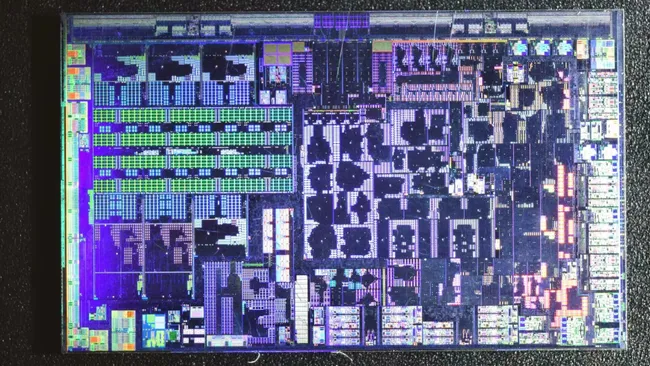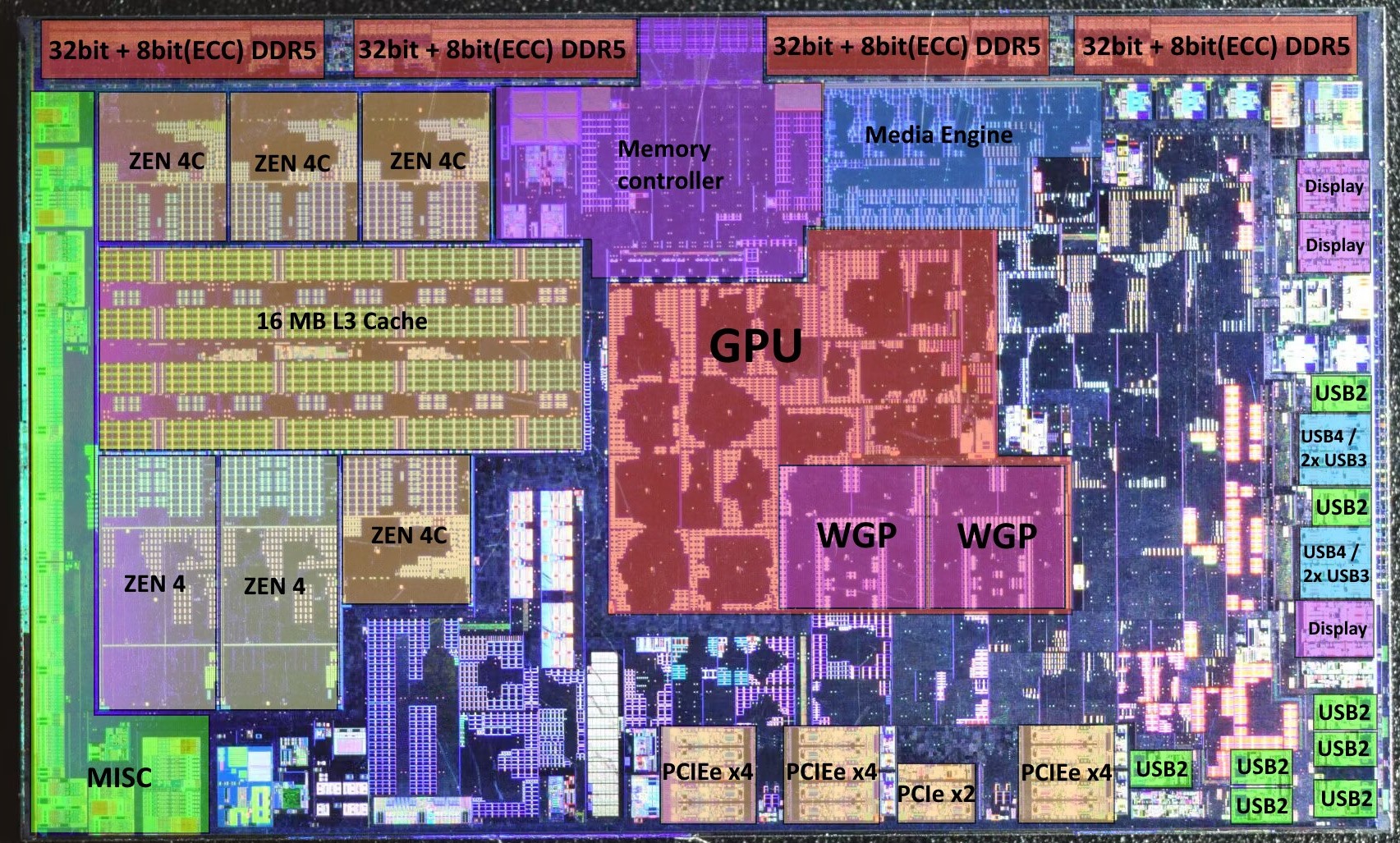Install the app
How to install the app on iOS
Follow along with the video below to see how to install our site as a web app on your home screen.
Note: This feature may not be available in some browsers.
You are using an out of date browser. It may not display this or other websites correctly.
You should upgrade or use an alternative browser.
You should upgrade or use an alternative browser.
AMD Execution Thread [2023]
- Thread starter Kaotik
- Start date
- Status
- Not open for further replies.
If 'high-end' RDNA4 has been pulled I would imagine it's primarily down to a reprioritisation of finite engineering resources into CDNA and future iterations given AMD's current market share in the consumer GPU space versus the significant investment and crazy demand/hype for AI from corporates and the big tech companies. And if so, hopefully that's a relatively short-term rejig. That or they decided a while back to focus on RDNA5 or the next gen iteration or future architecture with RDNA4 essentially being a streamlined RDNA3 with the clock speed/power issue fixed and few other refinements under the hood.
Not sure if it's by design or market forces, but every couple of years AMD seems to intentionally forgo competing at the high-end and actually comes up with some quite decent middle ground performers like RV770 and Polaris and this could be part of that cadence. RDNA3+ on a more mature or smaller process with better utilisation and efficiencies from the dual CUs and minor RT improvements would still be a capable GPU in nearly all segments. Fewer SKUs gives them more capacity to target other future designs or react to or develop features as well as optimise drivers. No doubt it would very likely still trail Nvidia on RT and be missing whatever buzzword feature they push with their next product line, but if it's priced competitively it could be quite compelling for a lot of gamers, as RV770 and Polaris were.
And we really could do with some sanity and re-adjustment in the product stack if AMD were tempted to be slightly disruptive on pricing in the next round if they're sitting it out at the high-end.
Not sure if it's by design or market forces, but every couple of years AMD seems to intentionally forgo competing at the high-end and actually comes up with some quite decent middle ground performers like RV770 and Polaris and this could be part of that cadence. RDNA3+ on a more mature or smaller process with better utilisation and efficiencies from the dual CUs and minor RT improvements would still be a capable GPU in nearly all segments. Fewer SKUs gives them more capacity to target other future designs or react to or develop features as well as optimise drivers. No doubt it would very likely still trail Nvidia on RT and be missing whatever buzzword feature they push with their next product line, but if it's priced competitively it could be quite compelling for a lot of gamers, as RV770 and Polaris were.
And we really could do with some sanity and re-adjustment in the product stack if AMD were tempted to be slightly disruptive on pricing in the next round if they're sitting it out at the high-end.
digitalwanderer
Legend
I doubt it'll go that way, but I sure hope you're right!If 'high-end' RDNA4 has been pulled I would imagine it's primarily down to a reprioritisation of finite engineering resources into CDNA and future iterations given AMD's current market share in the consumer GPU space versus the significant investment and crazy demand/hype for AI from corporates and the big tech companies. And if so, hopefully that's a relatively short-term rejig. That or they decided a while back to focus on RDNA5 or the next gen iteration or future architecture with RDNA4 essentially being a streamlined RDNA3 with the clock speed/power issue fixed and few other refinements under the hood.
Not sure if it's by design or market forces, but every couple of years AMD seems to intentionally forgo competing at the high-end and actually comes up with some quite decent middle ground performers like RV770 and Polaris and this could be part of that cadence. RDNA3+ on a more mature or smaller process with better utilisation and efficiencies from the dual CUs and minor RT improvements would still be a capable GPU in nearly all segments. Fewer SKUs gives them more capacity to target other future designs or react to or develop features as well as optimise drivers. No doubt it would very likely still trail Nvidia on RT and be missing whatever buzzword feature they push with their next product line, but if it's priced competitively it could be quite compelling for a lot of gamers, as RV770 and Polaris were.
And we really could do with some sanity and re-adjustment in the product stack if AMD were tempted to be slightly disruptive on pricing in the next round if they're sitting it out at the high-end.
If they release a 8800XT that performs like a 7900XTX but at lower power draw and price that will be ok, but doesn't give a real upgrade option for people who bought high end RDNA2 parts or entice those who bought nvidia 30 series 3080 or above or 40 series 4070 or above. People who have older/lower end parts probably won't want to spend $500ish on a new GPU anyway so I can't see where the demand would be coming from for such a part in 2024...
Bondrewd
Veteran
Now, yes.MI300 is the same too, isn't it?
Used to be different.
The thing is a wee bit too complex and thus any delay might bring it too close to RDNA5 to matter.Then why would AMD stop highend RDNA4?
Better focus on core IP delivery.
So it's likely a wait for RDNA5™ situation with RDNA3 & 4 (plus CDNA) laying the foundations? I hope they can deliver because they're further behind right now than most people think, it'll be difficult to catch up let alone get ahead which is a big ask because we know they'll keep pushing. Just thinking, if Nvidia gain 1.5x raster perf on average at the top end each gen RDNA5/Navi 51 will need to be ~3x faster in raster than Navi 31 to tie the 6090. That's >1.7x each gen, no pressure then
DegustatoR
Legend
Performance of all vendors is mostly limited by power so the coefficients which RDNA5 will be able to achieve over RDNA3 are wholly dependent on how well AMD will be able to optimize their power consumption with RDNA4 and 5. If they will be on par with what Nv will have in Blackwell then there wouldn't be much stopping them from competing with that in the high end.
But they should pay attention to their RT performance of course as it will be even more important in 2025 than it is now.
But they should pay attention to their RT performance of course as it will be even more important in 2025 than it is now.
Since they seem to have scraped the top two chips, I'd strongly suspect we'll be getting a 8600 - tier chip, which should be well bellow 7900XTXIf they release a 8800XT that performs like a 7900XTX but at lower power draw and price that will be ok, but doesn't give a real upgrade option for people who bought high end RDNA2 parts or entice those who bought nvidia 30 series 3080 or above or 40 series 4070 or above. People who have older/lower end parts probably won't want to spend $500ish on a new GPU anyway so I can't see where the demand would be coming from for such a part in 2024...
DegustatoR
Legend
Should be about on par with Navi 32 I think so ~7800XT level?Since they seem to have scraped the top two chips, I'd strongly suspect we'll be getting a 8600 - tier chip, well bellow 7900XTX
Well I think RDNA4 potentially only being some midrange part would suggest that they dont plan on riding out RDNA4 for a long time. Everytime they've done this kind of thing before, they've released a 'next gen' high end part the year after. And with Blackwell/RTX5000 series looking set for 2025 now, that seems like it's gonna be the actual RDNA5 competitor.So it's likely a wait for RDNA5™ situation with RDNA3 & 4 (plus CDNA) laying the foundations? I hope they can deliver because they're further behind right now than most people think, it'll be difficult to catch up let alone get ahead which is a big ask because we know they'll keep pushing. Just thinking, if Nvidia gain 1.5x raster perf on average at the top end each gen RDNA5/Navi 51 will need to be ~3x faster in raster than Navi 31 to tie the 6090. That's >1.7x each gen, no pressure then
So not quite as dire as you're making it sound. Plus, if AMD has any clue at all what's wrong with RDNA3, it would mean they have more room for improvement than normal. And finally, we dont know what they've got going on with chiplets for the future. We know there's the potential to add copious amounts of compute beyond what's achievable with a monolithic package, so if AMD aim high enough, it's not impossible they could challenge Nvidia high end offerings.
All that said, yea, I would mostly agree that AMD are in a tough spot to play catch up. Even with all the caveats above, it's just never a great idea to be too optimistic about Radeon's capabilities.
Should be about on par with Navi 32 I think so ~7800XT level?
You mean like how Navi33 was supposed to be on Navi21 level? Ha!
I dont think they're saying anything unreasonable. The N33 = N21 rumors were always a bit ridiculous, especially knowing N33 would still be TSMC 6nm. But thinking a theoretical N43 could equal N32 isn't crazy at all.You mean like how Navi33 was supposed to be on Navi21 level? Ha!
DegustatoR
Legend
No? Navi 33 should've been close to Navi 22 and it more or less is. Same expectations should be applied to Navi 43.You mean like how Navi33 was supposed to be on Navi21 level? Ha!
Btw does RDNA3 on desktop have higher idle power consumption than rdna 2?
Curious finding why on mobile, amd phoenix got higher idle power consumption than amd Rembrandt.
Curious finding why on mobile, amd phoenix got higher idle power consumption than amd Rembrandt.
Big/little could be a boon for console makers. have the os and other backround tasks run on the little cores and let the games run on the larger cores
It's actually already in handheld PC market as Ryzen Z1, it's using Phoenix2 instead of Phoenix used by Z1 ExtremeBig/little could be a boon for console makers. have the os and other backround tasks run on the little cores and let the games run on the larger cores
As far as i recall, there's a bug with idle power with multiple monitors. Might be fixed already?Btw does RDNA3 on desktop have higher idle power consumption than rdna 2?
Fixed for most, but not all. Apparently it's related to many especially higher end (specs wise) monitors not sticking to actual standard timingsAs far as i recall, there's a bug with idle power with multiple monitors. Might be fixed already?
- Status
- Not open for further replies.
Similar threads
- Replies
- 18
- Views
- 8K
- Replies
- 97
- Views
- 19K
- Replies
- 33
- Views
- 6K
- Replies
- 21
- Views
- 5K


